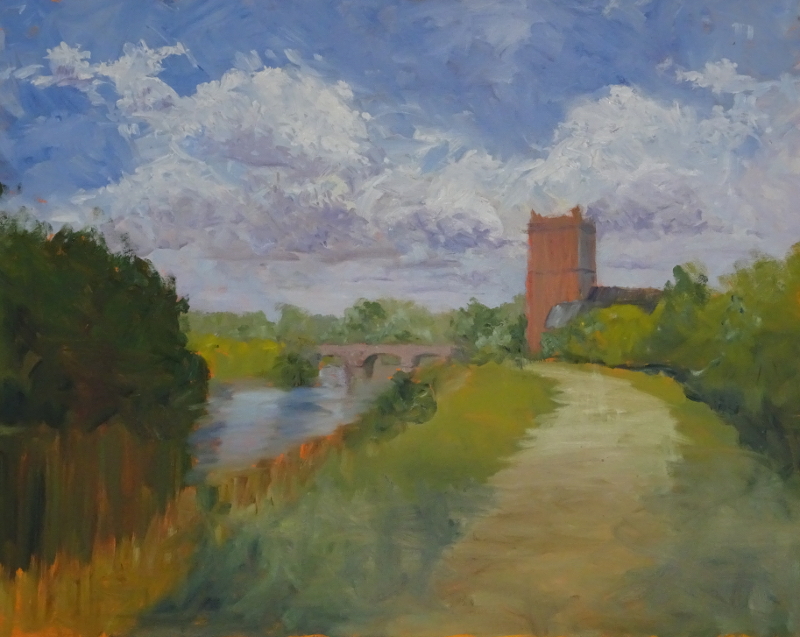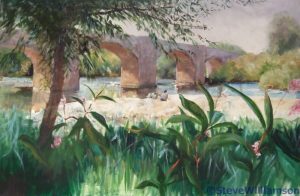 It doesn’t look as though a lot has changed, does it? This time I’ve modified the hedge and path, so the scene has more depth. For instance the trees on the far right of the painting now sit behind the hedge rather than being part of an amorphous mass of green, and the hedge itself there overhangs its base which in turn defines the edge of the ground. I’ve used variations of the greens first applied to give form to the hedge trying to “grey off” the tones as they near the church. Conversely I have sort to brighten and deepen the tones in the foreground – not too much as I don’t want them to take over the painting.
It doesn’t look as though a lot has changed, does it? This time I’ve modified the hedge and path, so the scene has more depth. For instance the trees on the far right of the painting now sit behind the hedge rather than being part of an amorphous mass of green, and the hedge itself there overhangs its base which in turn defines the edge of the ground. I’ve used variations of the greens first applied to give form to the hedge trying to “grey off” the tones as they near the church. Conversely I have sort to brighten and deepen the tones in the foreground – not too much as I don’t want them to take over the painting.
The same technique works on the path, too. By intensifying the tones in the path in the foreground, I have made it “lie down”. My photo tells me that there are flattened patches of grass down the middle, so painting these (next time) will both vary the surface and add to the recession.
Next the river bank has had some attention. There’s a nice clump of bushes (or brambles ?) hiding the end of the bridge near the church, and the bank slopes sharply too. Directional brush strokes help the illusion. Then the ground flattens as it nears the river, called to a halt by a beautiful dark bush which has Alizarin undertones. That’s a piece of serendipity, as I can introduce the same undertones ( at some time in the future!) in the large dark area to the left of the picture. I don’t really need an excuse to do that, but it’s nice to have one.
My classes have ended for the summer, but I am hoping to work on this painting at home and to post regularly about it, and about other paintings shouting for attention. But “don’t cry for me, Argentina,” I’ll probably be in the garden!




